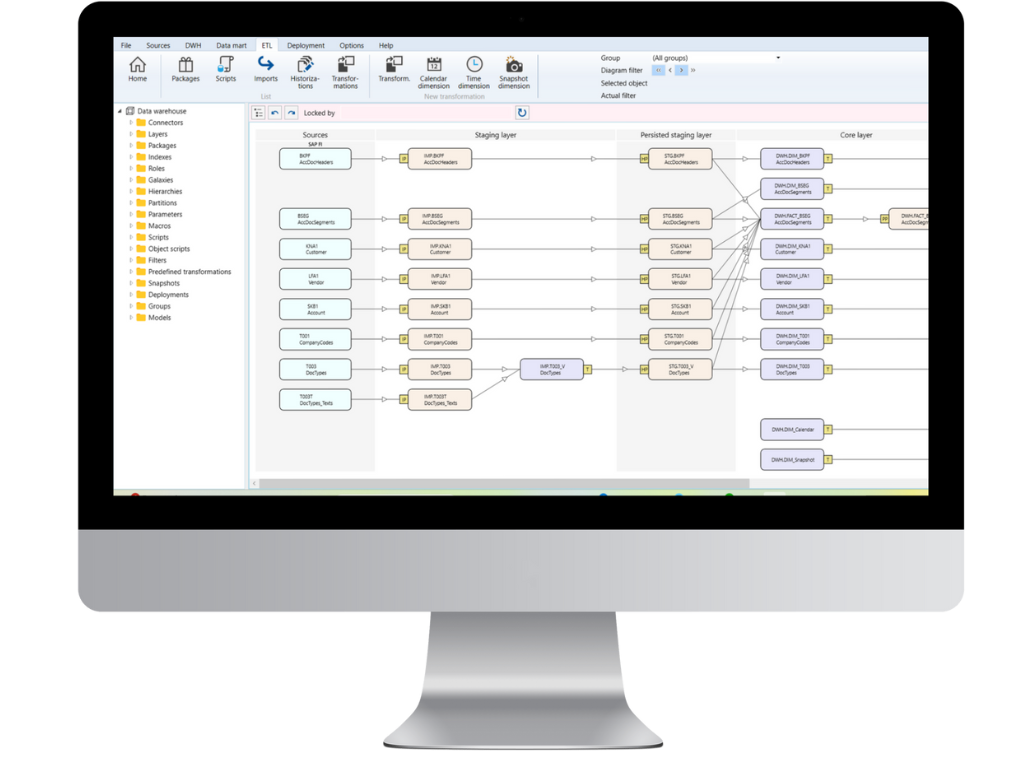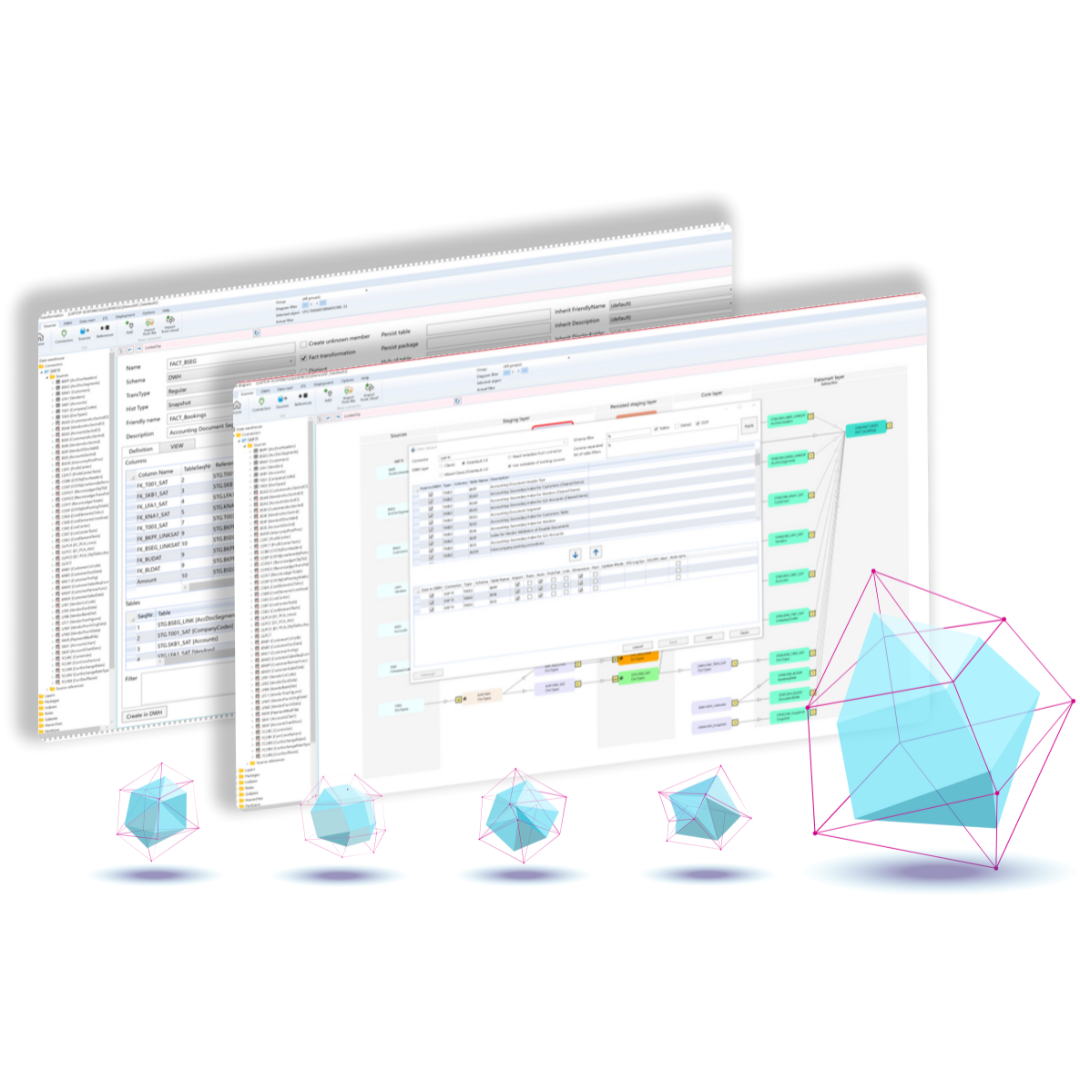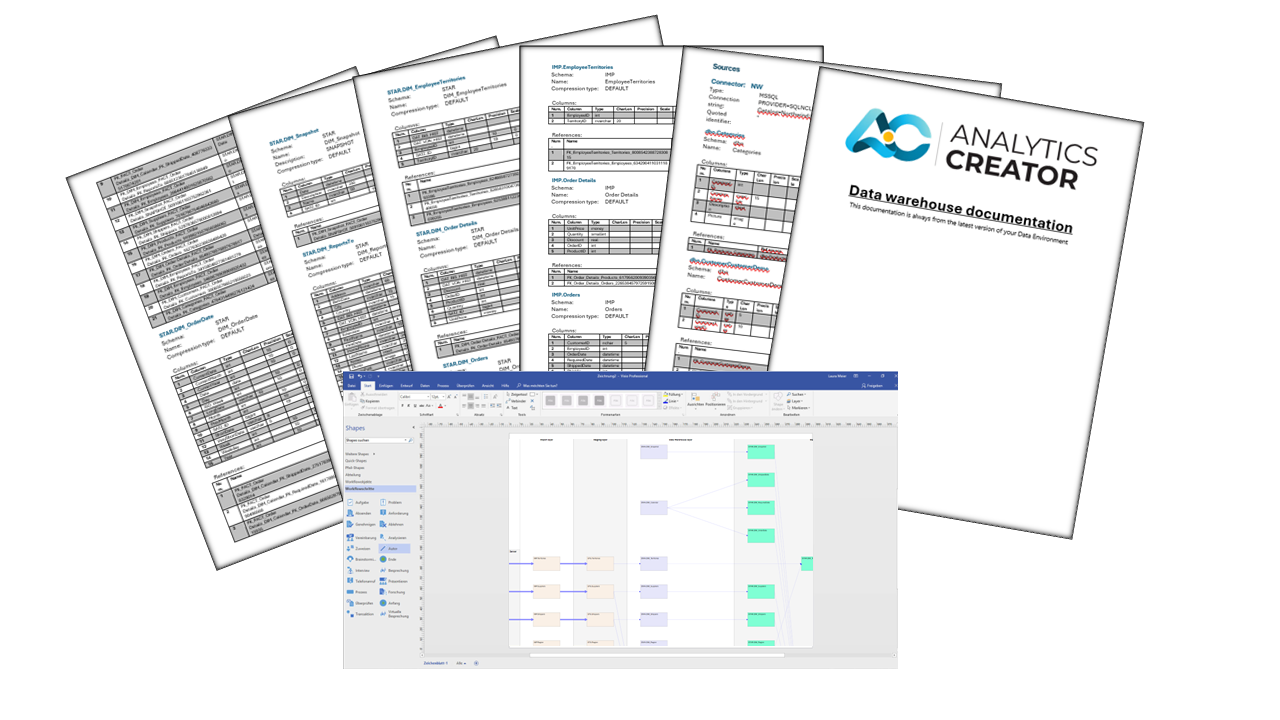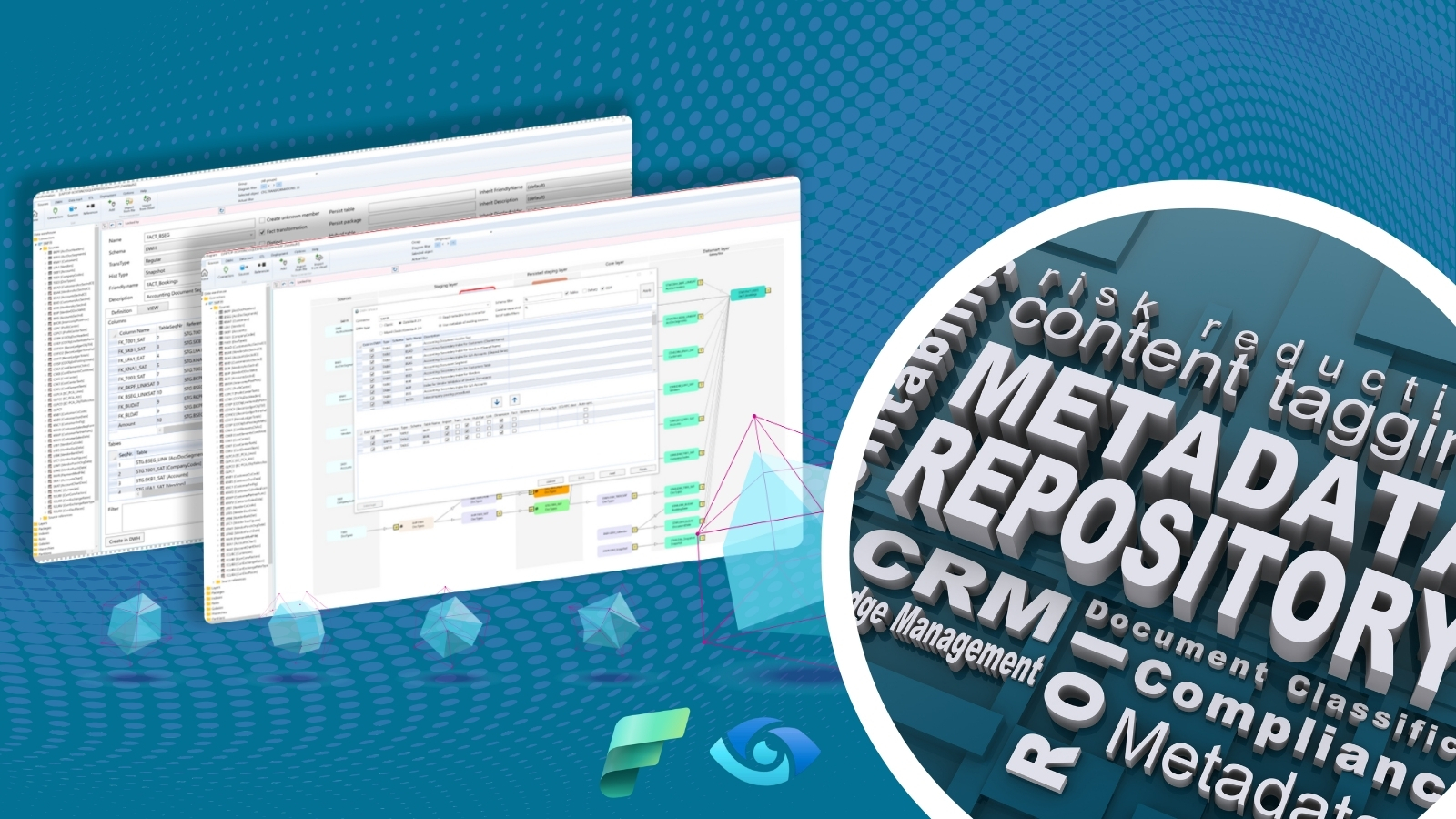Implementing a Metadata Framework with AnalyticsCreator: Enabling Scalable, Governed Data Products

Metadata is often treated as an afterthought—yet it plays a critical role in achieving scalable, governed, and efficient data operations. When organizations lack a structured approach to metadata, they face recurring challenges: duplicate logic, inconsistent definitions, disconnected documentation, and delayed delivery.
A well-implemented metadata framework addresses these issues by ensuring that metadata is not just documented but operationalized across the data lifecycle. In this article, we’ll explore how AnalyticsCreator elevates metadata management from passive cataloging to active automation—enabling data teams to accelerate delivery while maintaining governance and control.
Defining a Metadata Framework
A metadata framework is a system for organizing, standardizing, and applying metadata across your data platform. It serves as the backbone of your data strategy, providing the structure needed to build, govern, and scale your data assets.
Metadata is typically categorized into:
- Descriptive metadata – Names, labels, tags, and business definitions.
- Technical metadata – Data types, schema structures, transformation logic.
- Administrative metadata – Access permissions, ownership, and update frequency.
- Structural metadata – Relationships among datasets and entities.
Together, these elements support key practices such as data cataloging, lineage tracing, compliance tracking, and schema standardization, enabling more efficient data management and governance.
Metadata Framework vs. Semantic Layer
While a metadata framework governs and structures the technical and business metadata behind the scenes, the semantic layer represents that logic in a way that’s consumable by business users—translating tables and columns into KPIs, metrics, and business terms.
AnalyticsCreator provides both: a centralized metadata framework and an integrated semantic layer, enabling a seamless path from technical logic to self-service BI.
The Limitations of Conventional Metadata Practices
Many enterprises still rely on spreadsheets or siloed metadata catalogs that are disconnected from active development workflows. This fragmentation often results in several recurring challenges:
- Redundant logic written across multiple projects.
- Inconsistent or unclear business definitions.
- Lack of traceability between data sources and reporting tools.
- Manual, error-prone documentation.
Without an actionable metadata layer, teams struggle to align data engineering with governance requirements and business objectives, leading to inefficiencies and increased risk.
AnalyticsCreator: Operationalizing Metadata at Scale
AnalyticsCreator takes a fundamentally different approach by embedding metadata into every stage of the data development lifecycle. It transforms metadata from static documentation into executable logic that drives automation, lineage tracking, and regulatory compliance.

1. Centralized and Reusable Metadata Modeling
Data architects and engineers define models, mappings, historization logic, and business rules in a single, metadata-driven environment. These definitions are reusable across projects, ensuring consistency and standardization.
Metadata can also be extracted directly from source systems, allowing teams to bootstrap models based on existing structures and accelerate onboarding

2. Automated ELT and Data Warehouse Generation
In AnalyticsCreator, all transformation logic—such as star schema modeling, data vault automation, and slowly changing dimension (SCD) handling—is defined and managed within a centralized metadata-driven environment. Once defined, deployment-ready ELT packages are automatically generated for platforms like SSIS or Azure Data Factory, eliminating the need for manual SQL coding and streamlining delivery across environments.

3. Comprehensive Lineage and Impact Analysis
Every transformation, column, and model element is automatically tracked and visualized through an interactive lineage interface. This enables users to perform detailed impact analysis and demonstrate end-to-end traceability—from source systems to final reports—supporting data governance, auditing, and change management.

4. Built-in Documentation and Audit Support
Word and Visio documentation is automatically produced from the metadata layer. This ensures up-to-date, audit-ready outputs for stakeholders, data stewards, and compliance teams.

5. CI/CD Integration for Metadata Deployment
All metadata artifacts are version-controlled and integrated with GitHub or Azure DevOps. This supports modern DevOps workflows, enabling safe promotion of metadata changes across environments

6. Semantic Model Generation
AnalyticsCreator extends metadata into the analytical layer by automatically generating semantic models for tools like Power BI, Tableau, and Qlik. This ensures seamless alignment between backend data structures and business-facing reports, enabling consistent definitions, accurate measures, and a unified data experience across the organization.
Use Case: Rapid Deployment of a Governed Data Product
Consider a scenario where an organization needs to build a sales performance dashboard using data from any database systems or SaaS. With AnalyticsCreator, the process is streamlined as follows:
- Data sources and business rules are defined in the metadata layer.
- ELT pipelines are automatically generated for ingestion and transformation.
- A dimensional model is created with built-in historization.
- A Power BI Semantic Model is deployed directly from the metadata model.
- End-to-end lineage and documentation are generated in parallel.
This approach reduces delivery time from weeks to hours while ensuring accuracy, consistency, and governance throughout the process.
Why Metadata Frameworks Are Foundational to DataOps
As organizations adopt agile and DevOps practices for data, metadata becomes a key enabler of scalability, traceability and control. A strong metadata framework provides:
- Reusability – Accelerate delivery with pre-defined models, rules and logic.
- Alignment – Ensure consistency between technical assets and business definitions.
- Governance – Support auditability, lineage, and regulatory compliance.
- Deployment Confidence – Manage changes through controlled CI/CD pipelines.
A metadata framework also helps unify understanding across teams. It provides a consistent definition of KPIs and data structures, ensuring that business logic is calculated and interpreted uniformly—no matter the tool or user. This eliminates common pain points like conflicting metrics or redundant dashboards, and fosters true self-service analytics.
Without a robust metadata framework, teams risk inefficiencies, miscommunication, and increased compliance risks.
Conclusion: From Documentation to Automation
Metadata is no longer just a byproduct of development—it is a strategic asset. AnalyticsCreator transforms metadata from static documentation into a dynamic engine for automation, governance, and operational excellence.
By operationalizing metadata across the entire data lifecycle, AnalyticsCreator empowers teams to deliver trusted, governed data products faster—without sacrificing consistency or control. It’s an essential capability for any organization looking to scale effectively.
Frequently Asked Questions
What is a metadata framework, and why is it important in data product engineering?
A metadata framework is a structured approach to managing the information (metadata) that describes data assets, models, transformations, and processes within your data platform. In the context of data product engineering, a metadata framework enables automation, governance, lineage tracking, and scalability.
For an overview of AnalyticsCreator’s automation approach, visit the Product page.
How does AnalyticsCreator use metadata to automate data warehouse and data product delivery?
AnalyticsCreator leverages metadata-driven automation to streamline the creation of ELT pipelines, data models, and analytical products. By capturing and reusing business logic, data transformations, and structure definitions as metadata, AnalyticsCreator can generate data artifacts (like tables, views, and ETL packages) and keep everything version-controlled.
What are the key benefits of implementing a metadata framework with AnalyticsCreator?
Key benefits include:
-
Rapid delivery of governed, scalable data products.
-
Consistent modeling and transformation standards.
-
Automated documentation and lineage tracking.
-
Easier adaptation to changing requirements and platforms.
-
Reduced manual coding and errors.
See customer stories on the Case Studies page.
Can I integrate AnalyticsCreator with my existing Microsoft data stack?
Yes, AnalyticsCreator natively integrates with Microsoft platforms such as Azure Synapse Analytics, SQL Server and Microsoft Fabric. It supports a range of deployment patterns across on-premises and cloud environments
How does AnalyticsCreator support data governance and lineage?
AnalyticsCreator provides automated, metadata-driven lineage tracking and governance features. The platform generates documentation and visualizations that help you trace data flows, transformations, and dependencies, ensuring full transparency and compliance.
Explore the Features page for more details.
Is it possible to manage and deploy changes across multiple environments?
Yes, AnalyticsCreator supports CI/CD integration (with Azure DevOps, GitHub, etc.), allowing you to manage and deploy changes across development, test, and production environments. All changes are tracked and versioned through the metadata framework.
How can AnalyticsCreator help reduce manual effort and accelerate project timelines?
By automating repetitive modeling, transformation, and documentation tasks through its metadata framework, AnalyticsCreator allows teams to focus on high-value engineering work and reduces project delivery time.
Where can I get a personalized demo of AnalyticsCreator in action?
You can request a personalized demo directly from the Book a Demo page.



